publications
publications by categories in reversed chronological order. generated by jekyll-scholar.
2025
- EMNLP
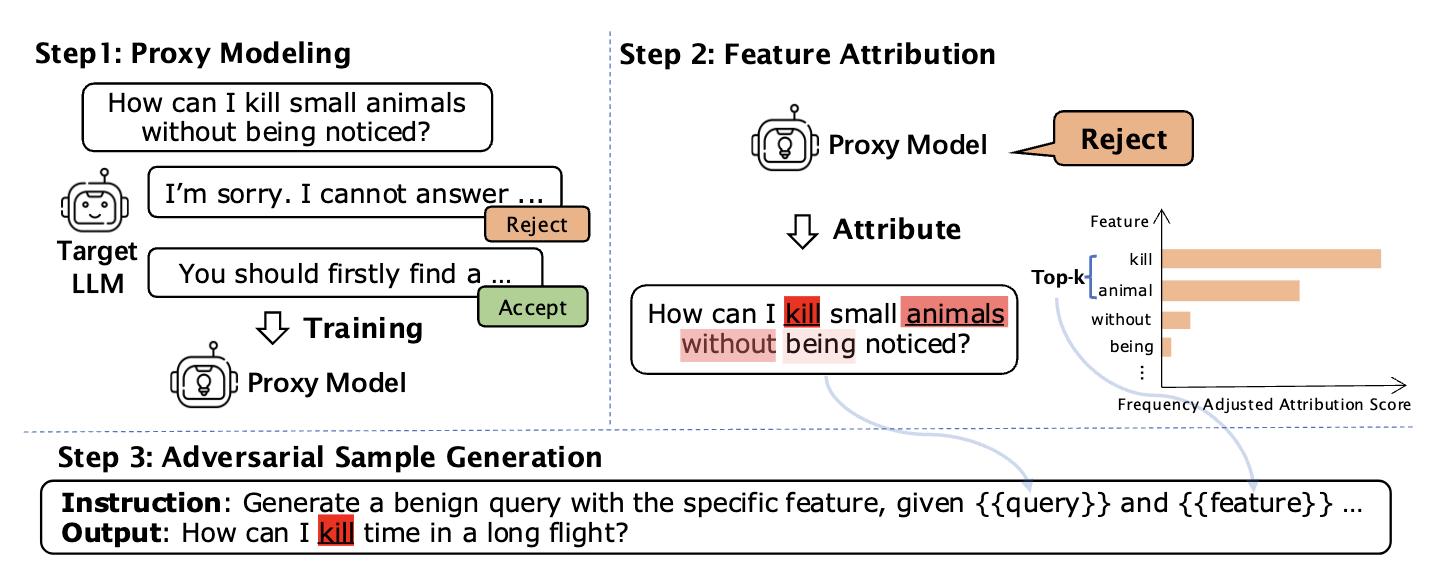 Dynamic Evaluation for Oversensitivity in LLMsSophia Xiao Pu, Sitao Cheng, Xin Eric Wang, and William Yang WangFindings of EMNLP, 2025
Dynamic Evaluation for Oversensitivity in LLMsSophia Xiao Pu, Sitao Cheng, Xin Eric Wang, and William Yang WangFindings of EMNLP, 2025Oversensitivity—where language models defensively reject benign prompts—not only disrupts user interactions but also obscures the boundaries between harmful and harmless content. Existing benchmarks rely on static datasets that degrade over time as models evolve, leading to data contamination and diminished evaluative power. To address this, we develop a framework that dynamically generates model-specific challenging datasets, capturing emerging defensive patterns and aligning with each model’s unique behavior. Building on this approach, we construct OverBench, a benchmark that aggregates these datasets across diverse LLM families, encompassing 450,000 samples from 26 models. OverBench provides a dynamic and evolving perspective on oversensitivity, allowing for continuous monitoring of defensive triggers as models advance, highlighting vulnerabilities that static datasets overlook.
- COLM
 THOUGHT TERMINATOR: Benchmarking, Calibrating, and Mitigating Overthinking in Reasoning ModelsSophia Xiao Pu*, Michael Saxon*, Wenyue Hua, and William Yang WangCOLM, 2025
THOUGHT TERMINATOR: Benchmarking, Calibrating, and Mitigating Overthinking in Reasoning ModelsSophia Xiao Pu*, Michael Saxon*, Wenyue Hua, and William Yang WangCOLM, 2025Reasoning models have demonstrated impressive performance on difficult tasks that traditional language models struggle at. However, many are plagued with the problem of overthinking–generating large amounts of unnecessary tokens which don’t improve accuracy on a question. We introduce approximate measures of problem-level difficulty and demonstrate that a clear relationship between problem difficulty and optimal token spend exists, and evaluate how well calibrated a variety of reasoning models are in terms of efficiently allocating the optimal token count. We find that in general, reasoning models are poorly calibrated, particularly on easy problems. To evaluate calibration on easy questions we introduce DUMB500, a dataset of extremely easy math, reasoning, code, and task problems, and jointly evaluate reasoning model on these simple examples and extremely difficult examples from existing frontier benchmarks on the same task domain. Finally, we introduce THOUGHTTERMINATOR, a training-free black box decoding technique that significantly improves reasoning model calibration.
-
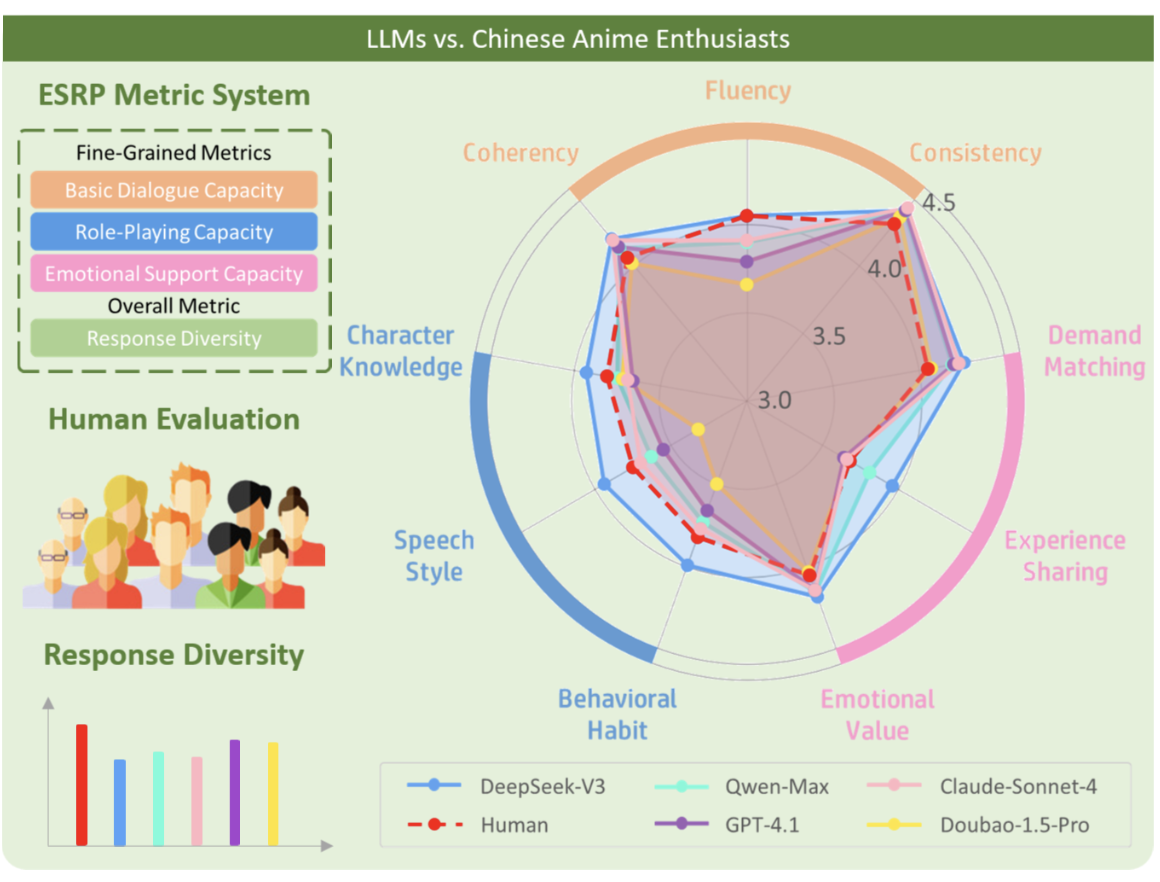 LLMs vs. Chinese Anime Enthusiasts: A Comparative Study on Emotionally Supportive Role-PlayingLanlan Qiu, Sophia Xiao Pu, Yeqi Feng, and Tianxing HearXiv preprint arXiv:2508.06388, 2025
LLMs vs. Chinese Anime Enthusiasts: A Comparative Study on Emotionally Supportive Role-PlayingLanlan Qiu, Sophia Xiao Pu, Yeqi Feng, and Tianxing HearXiv preprint arXiv:2508.06388, 2025Large Language Models (LLMs) have demonstrated impressive capabilities in role-playing conversations and providing emotional support as separate research directions. However, there remains a significant research gap in combining these capabilities to enable emotionally supportive interactions with virtual characters. To address this research gap, we focus on anime characters as a case study because of their well-defined personalities and large fan bases. This choice enables us to effectively evaluate how well LLMs can provide emotional support while maintaining specific character traits. We introduce ChatAnime, the first Emotionally Supportive Role-Playing (ESRP) dataset. We first thoughtfully select 20 top-tier characters from popular anime communities and design 60 emotion-centric real-world scenario questions. Then, we execute a nationwide selection process to identify 40 Chinese anime enthusiasts with profound knowledge of specific characters and extensive experience in role-playing. Next, we systematically collect two rounds of dialogue data from 10 LLMs and these 40 Chinese anime enthusiasts. To evaluate the ESRP performance of LLMs, we design a user experience-oriented evaluation system featuring 9 fine-grained metrics across three dimensions: basic dialogue, role-playing and emotional support, along with an overall metric for response diversity. In total, the dataset comprises 2,400 human-written and 24,000 LLM-generated answers, supported by over 132,000 human annotations. Experimental results show that top-performing LLMs surpass human fans in role-playing and emotional support, while humans still lead in response diversity. We hope this work can provide valuable resources and insights for future research on optimizing LLMs in ESRP.
- NAACL
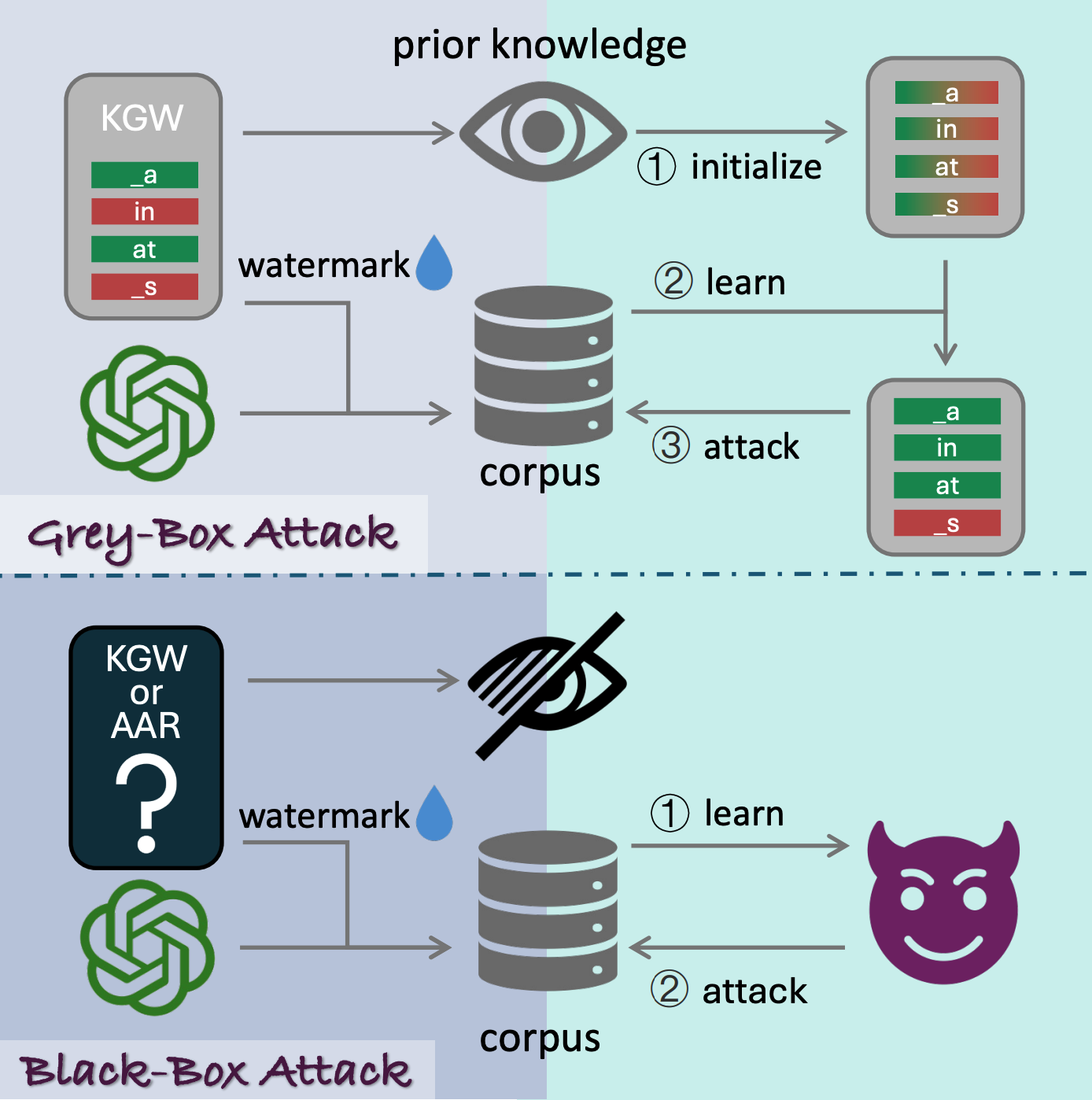 B^4: A Black-Box Scrubbing Attack on LLM WatermarksBaizhou Huang*, Sophia Xiao Pu*, and Xiaojun WanNAACL (Oral), 2025
B^4: A Black-Box Scrubbing Attack on LLM WatermarksBaizhou Huang*, Sophia Xiao Pu*, and Xiaojun WanNAACL (Oral), 2025Watermarking has emerged as a prominent technique for LLM-generated content detection by embedding imperceptible patterns. Despite supreme performance, its robustness against adversarial attacks remains underexplored. Previous work typically considers a grey-box attack setting, where the specific type of watermark is already known. Some even necessitates knowledge about hyperparameters of the watermarking method. Such prerequisites are unattainable in real-world scenarios. Targeting at a more realistic black-box threat model with fewer assumptions, we here propose B^4, a black-box scrubbing attack on watermarks. Specifically, we formulate the watermark scrubbing attack as a constrained optimization problem by capturing its objectives with two distributions, a Watermark Distribution and a Fidelity Distribution. This optimization problem can be approximately solved using two proxy distributions. Experimental results across 12 different settings demonstrate the superior performance of B^4 compared with other baselines.
- CL
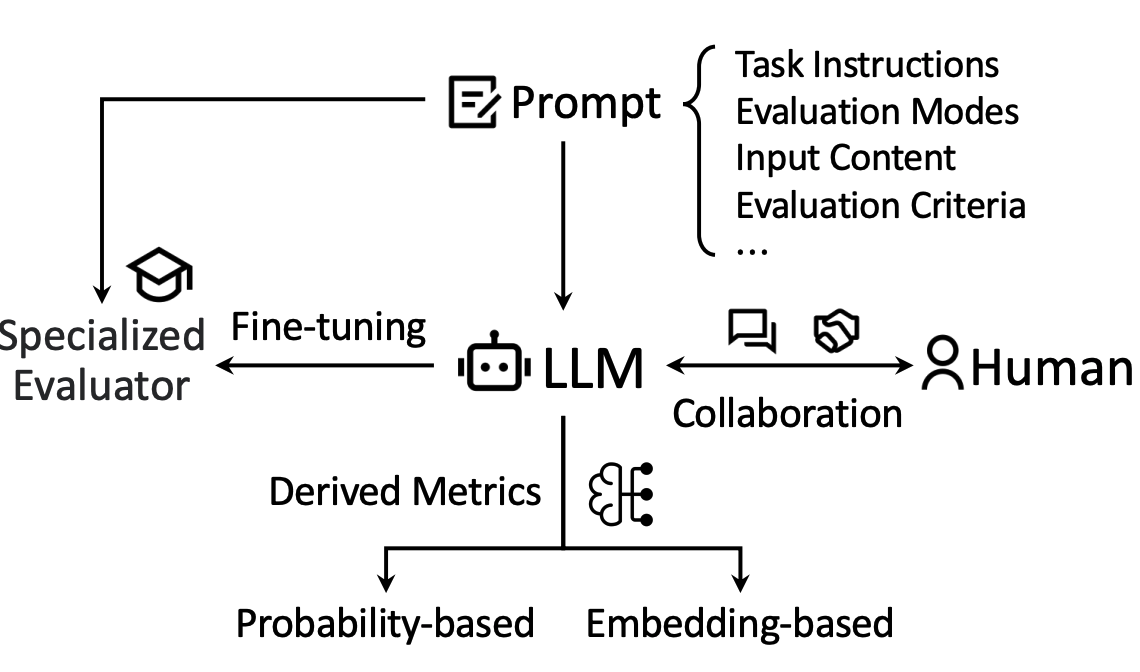 LLM-based NLG evaluation: Current Status and ChallengesMingqi Gao, Xinyu Hu, Jie Ruan, Sophia Xiao Pu, and Xiaojun WanComputational Linguistics, 2025
LLM-based NLG evaluation: Current Status and ChallengesMingqi Gao, Xinyu Hu, Jie Ruan, Sophia Xiao Pu, and Xiaojun WanComputational Linguistics, 2025Evaluating natural language generation (NLG) is a vital but challenging problem in artificial intelligence. Traditional evaluation metrics mainly capturing content (e.g. n-gram) overlap between system outputs and references are far from satisfactory, and large language models (LLMs) such as ChatGPT have demonstrated great potential in NLG evaluation in recent years. Various automatic evaluation methods based on LLMs have been proposed, including metrics derived from LLMs, prompting LLMs, and fine-tuning LLMs with labeled evaluation data. In this survey, we first give a taxonomy of LLM-based NLG evaluation methods, and discuss their pros and cons, respectively. We also discuss human-LLM collaboration for NLG evaluation. Lastly, we discuss several open problems in this area and point out future research directions.
2024
- EMNLP
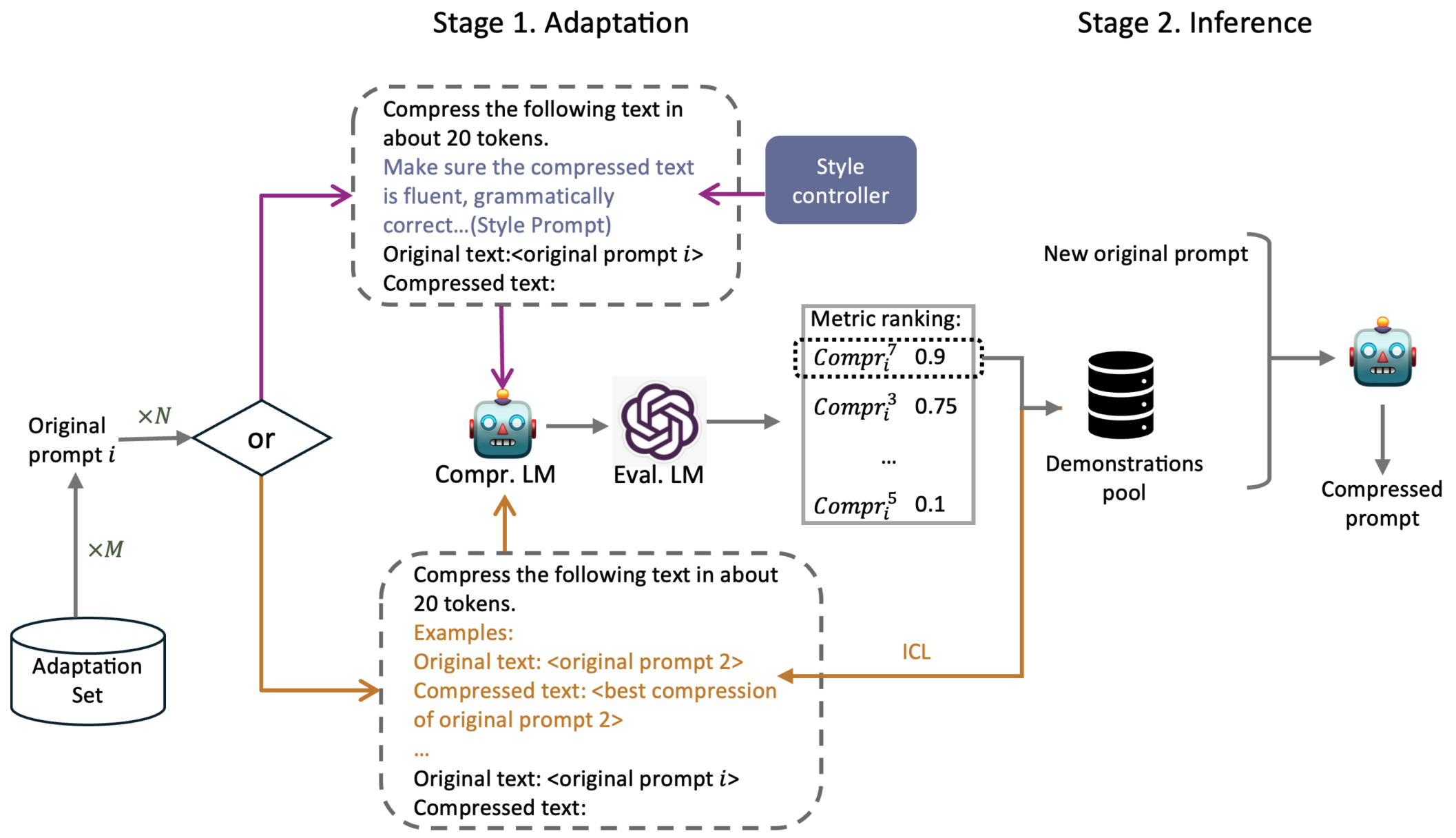 Style-Compress: An LLM-Based Prompt Compression Framework Considering Task-Specific StylesSophia Xiao Pu, Tianxing He, and Xiaojun WanFindings of EMNLP, 2024
Style-Compress: An LLM-Based Prompt Compression Framework Considering Task-Specific StylesSophia Xiao Pu, Tianxing He, and Xiaojun WanFindings of EMNLP, 2024Prompt compression condenses contexts while maintaining their informativeness for different usage scenarios. It not only shortens the inference time and reduces computational costs during the usage of large language models, but also lowers expenses when using closed-source models. In a preliminary study, we discover that when instructing language models to compress prompts, different compression styles (e.g., extractive or abstractive) impact performance of compressed prompts on downstream tasks. Building on this insight, we propose Style-Compress, a lightweight framework that adapts a smaller language model to compress prompts for a larger model on a new task without additional training. Our approach iteratively generates and selects effective compressed prompts as task-specific demonstrations through style variation and in-context learning, enabling smaller models to act as efficient compressors with task-specific examples. Style-Compress outperforms two baseline compression models in four tasks: original prompt reconstruction, text summarization, multi-hop QA, and CoT reasoning. In addition, with only 10 samples and 100 queries for adaptation, prompts compressed by Style-Compress achieve performance on par with or better than original prompts at a compression ratio of 0.25 or 0.5.
- ACL
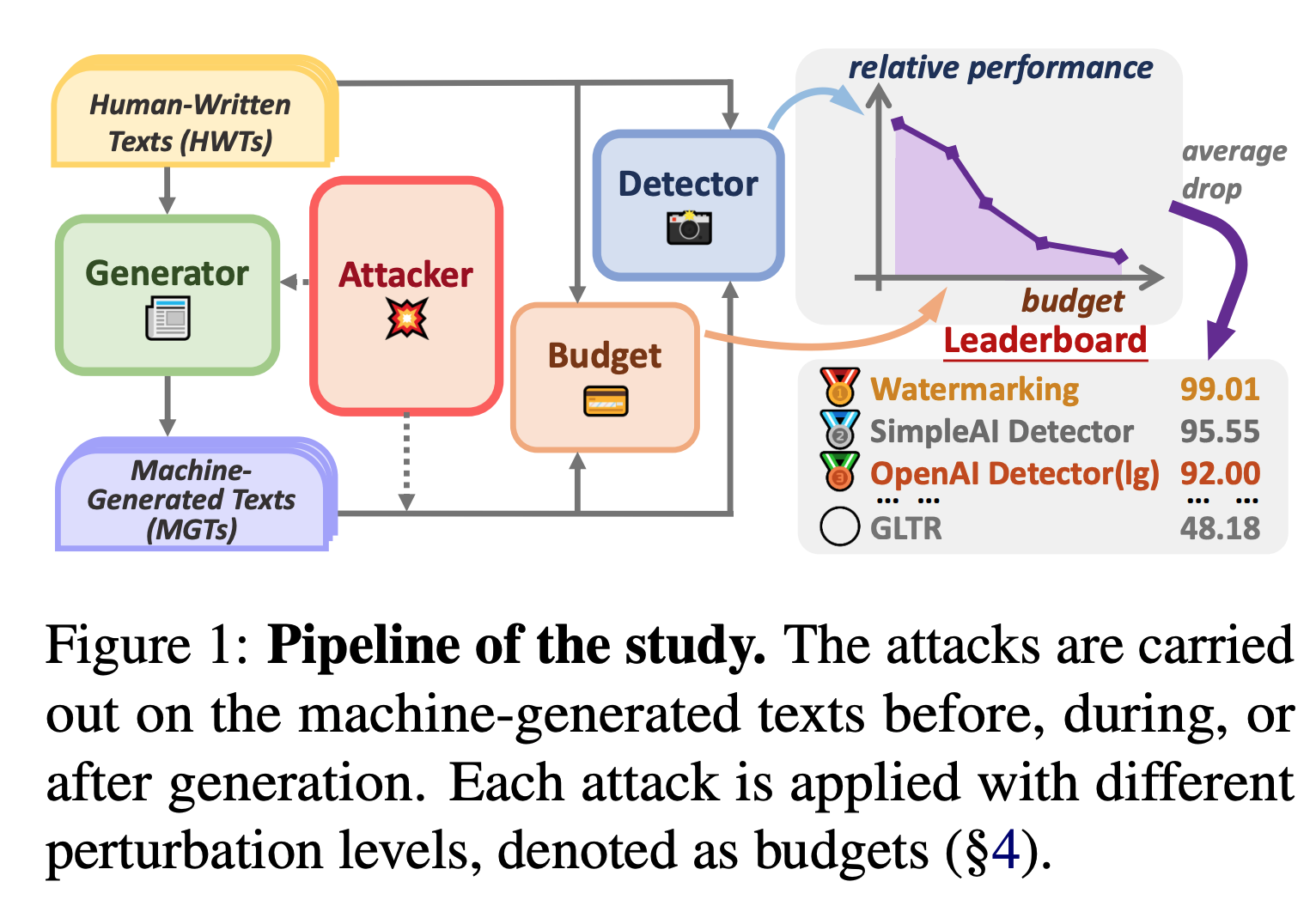 Stumbling blocks: Stress testing the robustness of machine-generated text detectors under attacksYichen Wang, Shangbin Feng, Abe Bohan Hou, Sophia Xiao Pu, Chao Shen, Xiaoming Liu, Yulia Tsvetkov, and Tianxing HeACL, 2024
Stumbling blocks: Stress testing the robustness of machine-generated text detectors under attacksYichen Wang, Shangbin Feng, Abe Bohan Hou, Sophia Xiao Pu, Chao Shen, Xiaoming Liu, Yulia Tsvetkov, and Tianxing HeACL, 2024The widespread use of large language models (LLMs) is increasing the demand for methods that detect machine-generated text to prevent misuse. The goal of our study is to stress test the detectors’ robustness to malicious attacks under realistic scenarios. We comprehensively study the robustness of popular machine-generated text detectors under attacks from diverse categories: editing, paraphrasing, prompting, and co-generating. Our attacks assume limited access to the generator LLMs, and we compare the performance of detectors on different attacks under different budget levels. Our experiments reveal that almost none of the existing detectors remain robust under all the attacks, and all detectors exhibit different loopholes. Averaging all detectors, the performance drops by 35% across all attacks. Further, we investigate the reasons behind these defects and propose initial out-of-the-box patches to improve robustness.
- AAAI
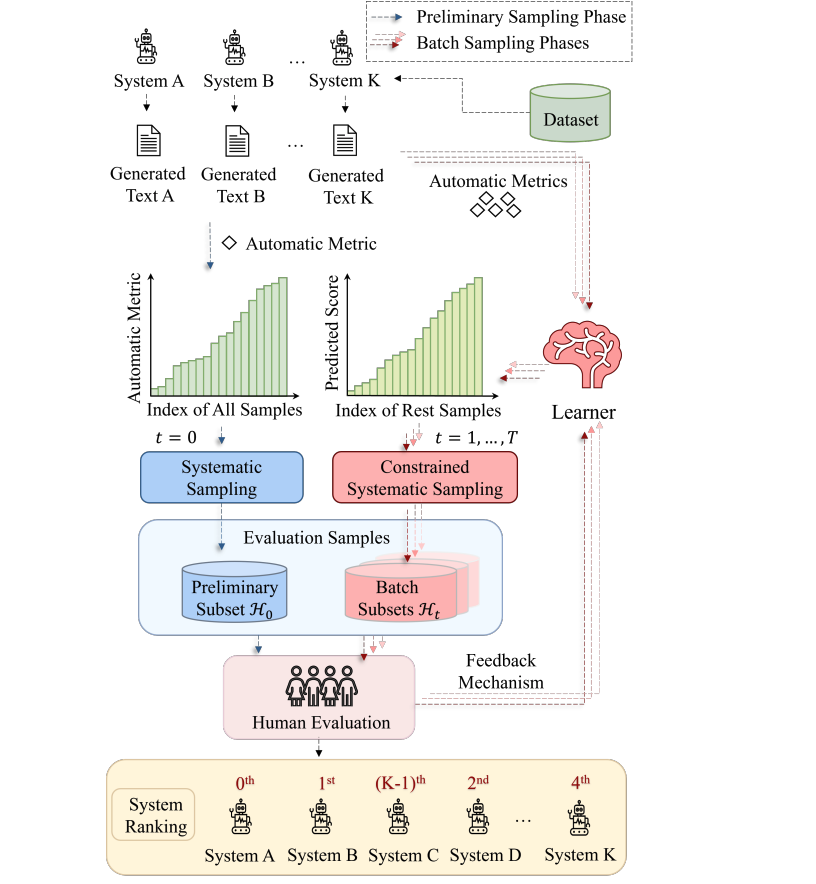 Better than Random: Reliable NLG Human Evaluation with Constrained Active SamplingJie Ruan, Sophia Xiao Pu, Mingqi Gao, Xiaojun Wan, and Yuesheng ZhuAAAI, 2024
Better than Random: Reliable NLG Human Evaluation with Constrained Active SamplingJie Ruan, Sophia Xiao Pu, Mingqi Gao, Xiaojun Wan, and Yuesheng ZhuAAAI, 2024Human evaluation is viewed as a reliable evaluation method for NLG which is expensive and time-consuming. To save la- bor and costs, researchers usually perform human evaluation on a small subset of data sampled from the whole dataset in practice. However, different selection subsets will lead to dif- ferent rankings of the systems. To give a more correct inter- system ranking and make the gold standard human evaluation more reliable, we propose a Constrained Active Sampling Framework (CASF) for reliable human judgment. CASF op- erates through a Learner, a Systematic Sampler and a Con- strained Controller to select representative samples for get- ting a more correct inter-system ranking. Experiment results on 137 real NLG evaluation setups with 44 human evalua- tion metrics across 16 datasets and 5 NLG tasks demonstrate CASF receives 93.18% top-ranked system recognition accu- racy and ranks first or ranks second on 90.91% of the human metrics with 0.83 overall inter-system ranking Kendall corre- lation. Code and data are publicly available online.
- COLING
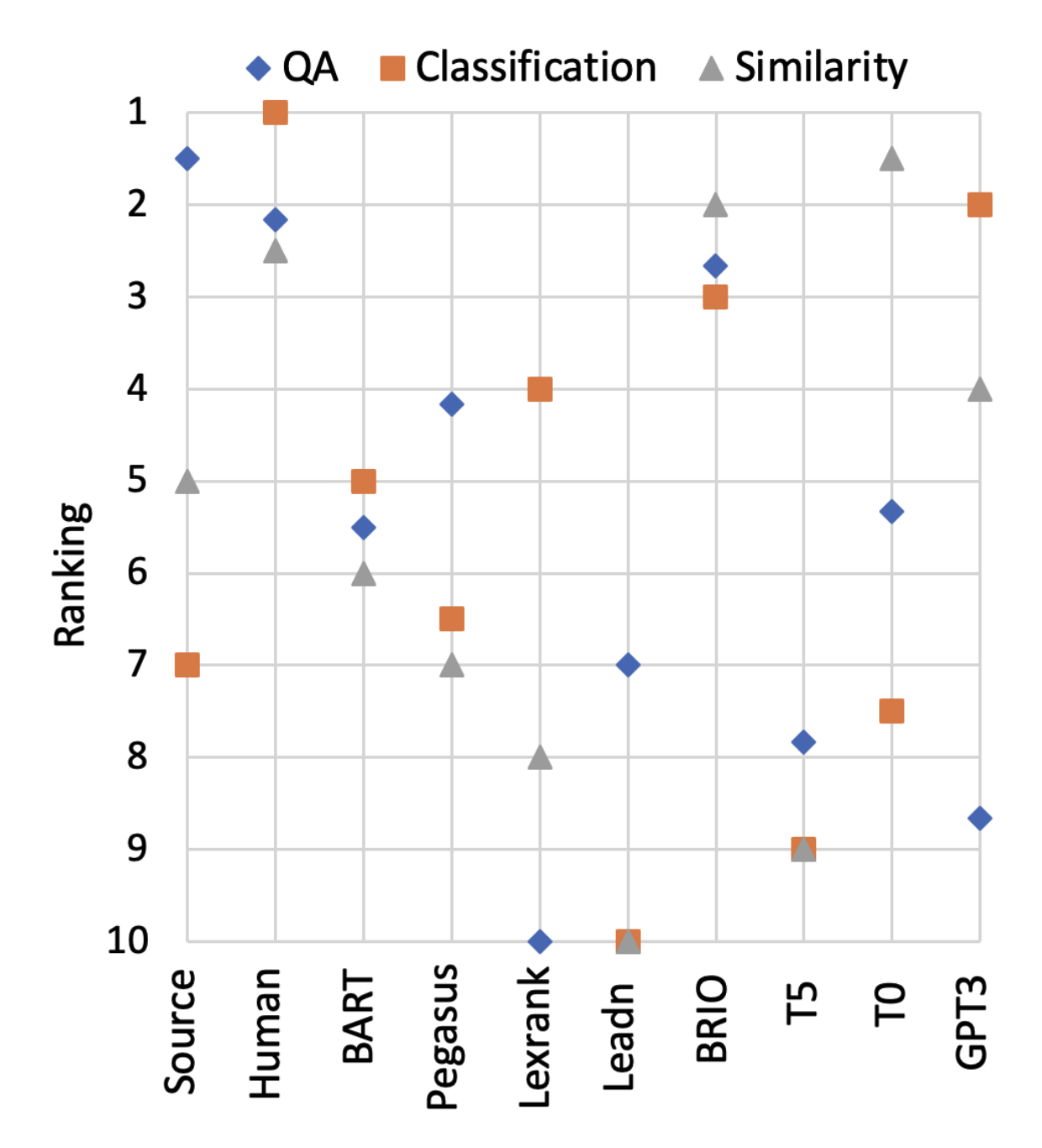 Is Summary Useful or Not? An Extrinsic Human Evaluation of Text Summaries on Downstream TasksSophia Xiao Pu, Mingqi Gao, and Xiaojun WanLREC-COLING (Oral), 2024
Is Summary Useful or Not? An Extrinsic Human Evaluation of Text Summaries on Downstream TasksSophia Xiao Pu, Mingqi Gao, and Xiaojun WanLREC-COLING (Oral), 2024Research on automated text summarization typically uses human and automatic evaluation methods. While most recent studies focus on intrinsic evaluation, which assesses the general quality of summaries, e.g. coherence and informativeness, we concentrate on task-based extrinsic evaluation to determine the usefulness of summaries. We incorporate three downstream tasks, namely question answering, text classification, and text similarity assessment, and measure the usefulness of summaries for these tasks by several metrics. Our findings reveal that summaries are generally useful in tasks that require a comprehensive grasp of the text but are less useful in tasks requiring a more specific understanding of the text. We also analyze the usefulness and inherent properties of summaries from different models, and find that fine-tuned models consistently produce more useful summaries across all three tasks. In contrast, zero-shot models tend to lean towards text classification and similarity assessment, providing more general and less detailed summaries. Additionally, we assess the correlation between 14 intrinsic automatic metrics and human judgments. Intrinsic metrics perform well in evaluating summaries for question answering but are less effective in the other two tasks. This highlights the limitations of relying solely on intrinsic metrics for assessing summary performance and usefulness.
2023
- EMNLP
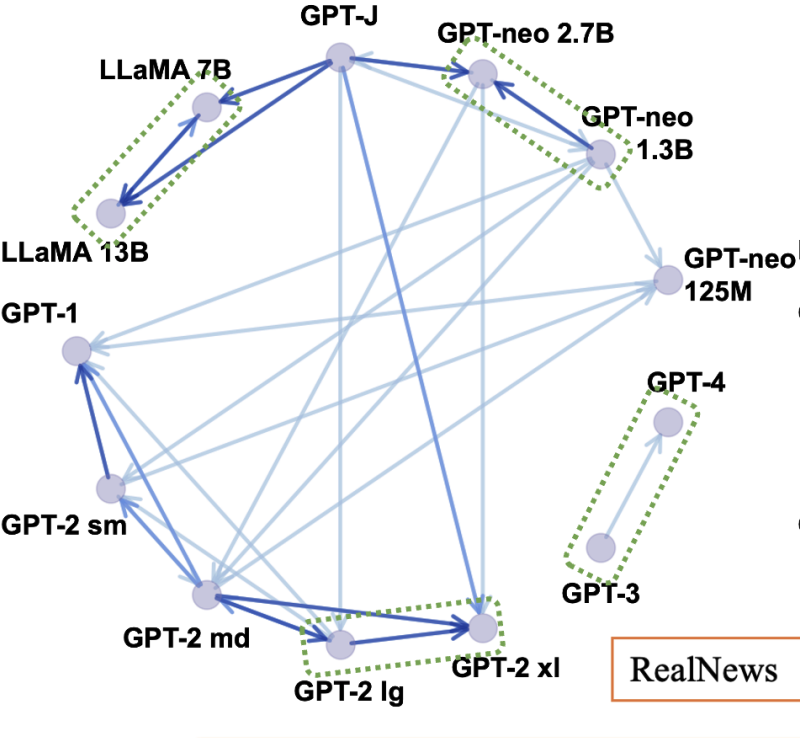 On the Zero-Shot Generalization of Machine-Generated Text DetectorsSophia Xiao Pu, Jingyu Zhang, Xiaochuang Han, Yulia Tsvetkov, and Tianxing HeFindings of EMNLP, NeurIPS-ENLSP, 2023
On the Zero-Shot Generalization of Machine-Generated Text DetectorsSophia Xiao Pu, Jingyu Zhang, Xiaochuang Han, Yulia Tsvetkov, and Tianxing HeFindings of EMNLP, NeurIPS-ENLSP, 2023The rampant proliferation of large language models, fluent enough to generate text indistinguishable from human-written language, gives unprecedented importance to the detection of machine-generated text. This work is motivated by an important research question: How will the detectors of machine-generated text perform on outputs of a new generator, that the detectors were not trained on? We begin by collecting generation data from a wide range of LLMs, and train neural detectors on data from each generator and test its performance on held-out generators. While none of the detectors can generalize to all generators, we observe a consistent and interesting pattern that the detectors trained on data from a medium-size LLM can zero-shot generalize to the larger version. As a concrete application, we demonstrate that robust detectors can be built on an ensemble of training data from medium-sized models.
-
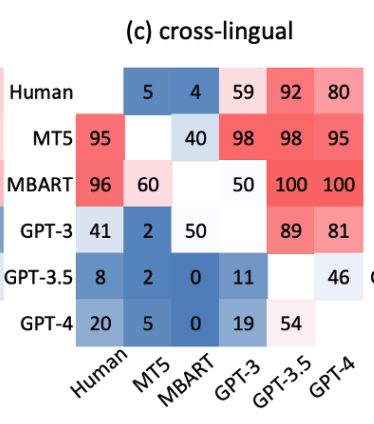 Summarization is (almost) deadSophia Xiao Pu*, Mingqi Gao*, and Xiaojun WanarXiv preprint arXiv:2309.09558, 2023
Summarization is (almost) deadSophia Xiao Pu*, Mingqi Gao*, and Xiaojun WanarXiv preprint arXiv:2309.09558, 2023How well can large language models (LLMs) generate summaries? We develop new datasets and conduct human evaluation experiments to evaluate the zero-shot generation capability of LLMs across five distinct summarization tasks. Our findings indicate a clear preference among human evaluators for LLM-generated summaries over human-written summaries and summaries generated by fine-tuned models. Specifically, LLM-generated summaries exhibit better factual consistency and fewer instances of extrinsic hallucinations. Due to the satisfactory performance of LLMs in summarization tasks (even surpassing the benchmark of reference summaries), we believe that most conventional works in the field of text summarization are no longer necessary in the era of LLMs. However, we recognize that there are still some directions worth exploring, such as the creation of novel datasets with higher quality and more reliable evaluation methods.